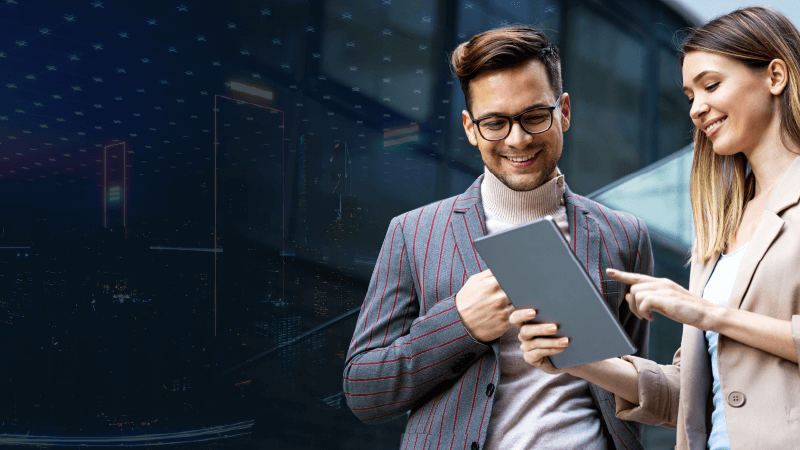This website uses cookies. By continuing to browse the site, you are agreeing to our use of cookies
Blockchain 101 – The Next Big Shift in Technology – Part-3
Financial Services
June 27, 2017
Part 3
(This is the third blog in series of a 4 part essay on Blockchain 101. For the previous articles, please click part 1 & part 2)
Architecture
Blockchain has a stacked architecture. Let’s try to understand it with a Bitcoin’s stack that serves as the model and template for all other Blockchains. At the bottom of the stack is the Bitcoin Blockchain: a database of all transactions, grouped into ‘blocks’ and replicated across thousands of ‘nodes’. It is monolithic and scale sensitive (there is only one), and it becomes more reliable and robust as the number of nodes and the number of blocks continue to grow. Physically, these nodes are racks of dedicated computing devices, operated in data centers owned by so-called mining pools and concentrated mainly in China. Mining is a for-profit, commodity business.
The Bitcoin protocol’s ‘operating system’, is placed on the top of the Blockchain. . This is a free, open-source software, maintained by the Bitcoin’s Core team. It has strengths comparable to Linux, like rigorous code testing, rapid improvement cycles, and trust in the collective product, as it is open source. It also has the weakness of open source development model, that is, the difficulty of making strategic choices only by consensus.
Bitcoins, themselves are the next layer. They are tokens/assets that are exchanged within the system and minted by miners (the network of nodes that validate transactions) as a reward for validating the transactions. Like any medium of exchange, the tokens have value, based on people’s perception that other people think that the token has value.
Applications and services make up the top layer and consists of ‘wallets’ (software to hold and manage bitcoins on a smartphone or computer); exchanges that convert bitcoins to and from fiat currency; and information services. There are hundreds of such products and services, chiefly developed by start-up companies.

As shown in the exhibit above, this stacked architecture defines the recombinatorial framework, within which new currencies, new services, and entirely new concepts have been developed.
You can also see variants to Bitcoin in the above image. Let’s see their brief descriptions:
Colored coins are top-of-stack innovations that exploit a blank field within each Bitcoin, to record unrelated data. An UK-based company Everledger, for instance, initially leveraged Bitcoins to place ‘bling on the Blockchain’ by recording some 40 unique, laser-read identifiers of a diamond, providing proof of provenance and ownership. The Bitcoin was not used to buy the diamond, was just used to create an inviolable record of the transfer of a specific authenticated stone. The same approach could be used to track any valuable asset, with a complex transaction history. *QuHarrison Terry talks about colored coins in his famous *blogpost on Blogchain.
Altcoins borrow most or all of the Bitcoin protocols to create a separate token with its own stack. Many are exotically named jokes or Ponzi schemes: BaconBitsCoin, Kimdotcoin, and Zombiecoin, among others. However, some are more ambitious tweaks on the Bitcoin protocol. Litecoin, for example, is designed to produce blocks at a faster rate and with less computation than Bitcoin, and Monero pools transactions to prevent even pseudonymous tracing of payments.
Ethereum is an entirely new stack, which only a year after its launch, in July 2015, had a market value of nearly $1 billion. Many call it Bitcoin 2.0. Ethereum has its own blockchain and token (ether), and a protocol that supports not just payments but programmable transactions: ‘smart contracts’are executed in code, not law. Its creator, Vitalik Buterin, describes Ethereum as ‘the world computer’. Ethereum has nurtured a rapidly growing ecosystem of applications, with (perhaps predictably) mixed results. Notably, the DAO (a DAO is a decentralized autonomous organization) was an attempt to build a venture funding ‘company’ from Ethereum smart contracts alone. Open-source developers building applications beyond payments, continue to focus on Ethereum as their preferred platform.
Permissioned Blockchains deviate substantially from the open Bitcoin paradigm, restricting certain roles or access to a club of participants, typically financial institutions. Only members are variously allowed to inspect the Blockchain, engage in transactions, and operate as a processing node. Permissioned Blockchains allow transactions to be written in legal language, as well as in computer code; they also enable regulatory review. Today, they are only at the proof-of-concept stage, but consortia such as R3 CEV in banking and many financial technology companies are focused on making Permissioned Blockchains’ a reality, especially for clearing and settling transactions in securities and foreign exchange.
Sources
- TED Talk by Don Tapscott: How the blockchain is changing money and business
- BCG blog: A Strategic Perspective on Blockchain and Digital Tokens
- BCG blog: Seven Possible Killer Apps for Blockchain And Digital Tokens
- BCG blog: HOW BITCOIN WORKS
- Investopedia term definition: 51% Attack
- Bitcoincharts
- Wiki: Blockchain
Related Blogs

Generative AI in Financial Services: Transforming Goal-based Financial Planning
- Financial Services
- Generative AI

Six Frameworks for Financial Services Modernization
- Financial Services
- Generative AI

KYC Process in Wealth Management: Digitalization Benefits
- Financial Services

Composable Enterprise Model: Unlocking New Growth Opportunities in Financial Services
- Financial Services

Generative AI in Financial Services: Reshaping Business Value and Customer Journeys
- Financial Services
- Generative AI

Revolutionizing Wealth Management: The Gen AI Advantage
- Financial Services
- Generative AI

Gen AI: A Game Changer in Bond Investment through Risk Assessment
- Financial Services
- Generative AI

Transforming Asset Management: The Power of Gen AI
- Financial Services
- Generative AI

Empowering Financial Institutions in the Digital Era: How Generative AI is Reshaping Business Value and Customer Journeys
- Financial Services
- Generative AI

Ready to Pursue Opportunity?
Every outcome starts with a conversation








